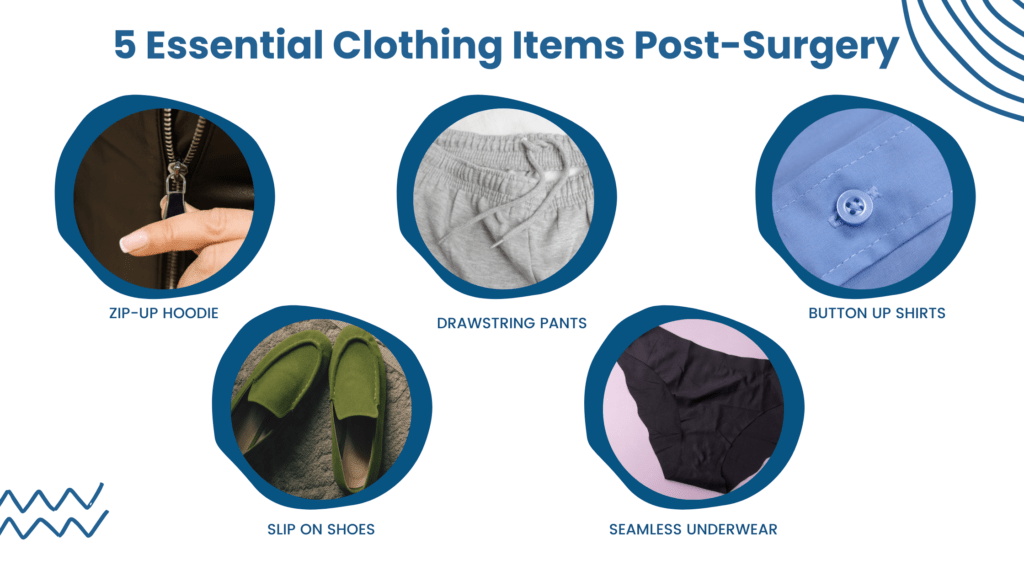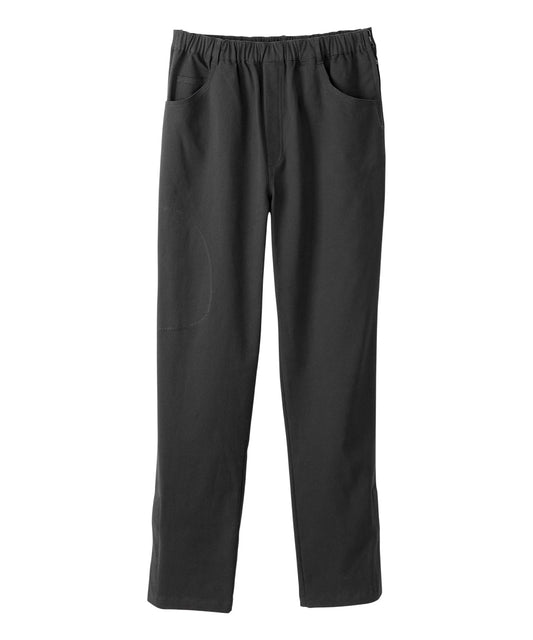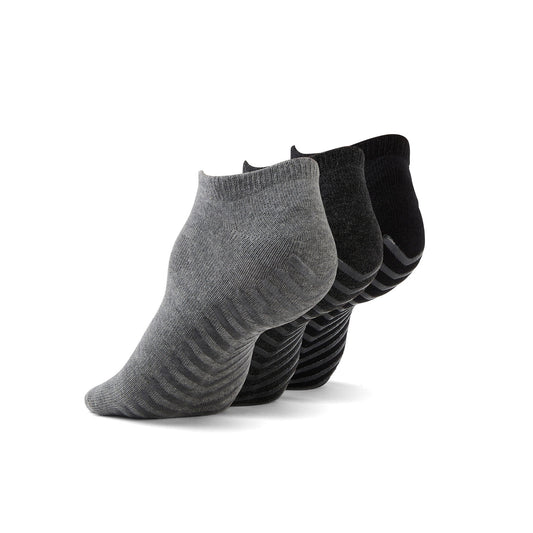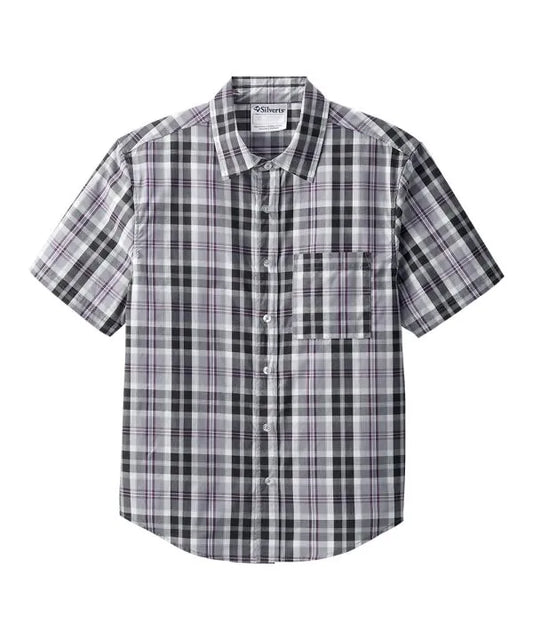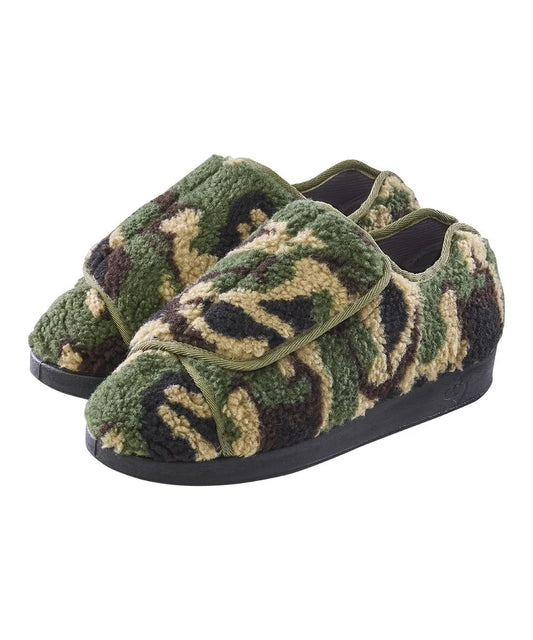The recovery process from surgery is a journey that requires patience, care, and the right resources to ensure a healthy, smooth healing process. One often overlooked resource is the kind of clothing one wears. While it might seem trivial compared to medication or physical therapy, the right choice of post-surgery clothing can make or break one’s comfort, mobility, and even emotional state during the recovery process.
No matter whether the recovery is from orthopedic, breast, or abdominal surgery, the clothing chosen should above all provide coverage; in addition, it should be able to support swelling, guard delicate areas, provide room for medical devices such as IV lines or drains, and help to maintain dignity and self-esteem.
Our aim is to clarify the essential information relating to post-operative dressing. This includes the principles of choice, general guidelines for dressing in combination with medical appliances, and references on adaptive clothing that unite aesthetics with function. In addition, we shall outline three adaptive garments that have greatly contributed to many patients during their post operative recovery period.
Must-Have Items for Abdominal Surgery Recovery
Abdominal surgery, including procedures like hernia repair, gallbladder removal, gastric operations, hysterectomy, and cesarean delivery, are among the most common medical procedures. The post-operative recovery period can be especially sensitive, particularly when it comes to the abdominal region. Since the abdomen is integral to many everyday activities such as standing, sitting, bending, and coughing, it is not surprising that the choice of proper clothing during the recovery period is of extreme significance
Why Traditional Pants May Not Work
Imagine trying to wear your favourite pair of jeans shortly after surgery on your abdomen. The waistband presses directly above new cuts, which can cause pain or interfere with dressings. Moreover, buttons or zippers require bending, twisting, or straining, efforts that might be contraindicated during your convalescence. Even fabrics that are soft can cause friction against sensitive skin, thus potentially leading to irritation or delayed healing.
Adaptive post-operative trousers often include:
Its height can be above, below, or horizontally off the line of incision, thus reducing pressure on sutured tissue. For example, a maternity-type high waistband can provide gentle support without causing compression.
-
Drawstring or elastic waists are meant to provide ease around swelling or body shape changes, which are commonly noted in the healing process. It is not good to have tight or constrictive pants when one's body is already sensitive.
-
Soft, breathable clothing, like bamboo blends, modal, or cotton jersey, work well to encourage moisture wicking and reduce skin irritation. Compared to coarse denim, these materials create a considerably gentler feel against sensitive skin.
-
Side openings or thigh-length zippers on trousers allow for the convenience of putting them on when one is seated or horizontal, and therefore makes standing or bending unnecessary. The provision is especially critical during difficult convalescent phases.
Real-Life Example
Take the case of Lisa, who had a C-section. Her doctor advised her against any pressure on the abdomen for a period of six weeks. She chose adaptive maternity leggings with a high elastic waistband that lay comfortably under the ribs, ensuring that her incision was not subjected to fabric pressure. The stretchy fabric hugged her in all her movements when she sat and stood, and the side-zipper pants she later found helped her to dress herself without anyone's help.
How to Dress Around IV Lines and Drains
Many patients will leave surgery with intravenous lines, surgical drains, or central ports in place. The difficulty of dealing with these devices in conjunction with clothing stems from the need for the devices to be easily accessible to medical personnel while also providing security and comfort for the user.
The Challenges
Tight sleeves or pant legs can snag tubing. Traditional clothing often requires nurses to undress patients completely so that nurses can view or reach sites. Bulbs on drainage that are hanging loosely are annoying when pulled inadvertently.
Example Scenario
Mark had hip replacement surgery and came home with drains and a catheter. His caregiver found front-closure shirts with magnet buttons a lifesaver, allowing quick access for medical checks without disturbing Mark’s comfort. He also wore pants with side zippers that didn’t tug on his drains during transfers.
Adaptive Clothing Solutions
-
Front-closure shirts: Snap, Velcro, or magnetic closures on shirts allow patients to dress and undress without raising arms or pulling shirts overhead, which can disrupt IVs or cause discomfort.
-
Side-opening pants: Hidden zippers along the outer seam let patients slip pants on and off without needing to lift legs high or twist hips critical for those with limited mobility or who are still fragile.
-
Some special clothing has built-in pockets made for drain bulbs or tiny pouches which can be placed inside trousers or blouses. The said element avoids accidental pulling and makes movement easy during daily activities.
-
Stretch panels: Strategically placed stretch fabric near medical sites (underarm, thigh) provides room for tubes and ports without adding bulk or pressure.
Best Front-Closure Bras for Post-Op Comfort
During breast surgery, cardiovascular illnesses, or shoulder trauma, a brassiere can be a cause of pain and distress for patients. Most bras that have back closure often pose a problem concerning administration post-surgical procedures. Features of an Ideal Front-Closure Bra. These steps remove the requirement to hold the arms behind the back, a procedure commonly uncomfortable or problematic soon after surgery. They reduce stress on the incision and drainage sites and allow caregiver support when needed.
Features to Look For
-
Front closures (hooks, Velcro, or magnets) that secure easily.
-
Soft, breathable fabrics that reduce sweat and irritation.
-
Wide, padded straps that don’t dig into tender shoulders or surgical sites.
-
Light compression if recommended, to reduce swelling and support tissue.
Care Tip
Some post-operative bras contain tiny loops or pockets specifically designed to hold surgical drains out of sight, reducing the necessity for other safety pins or makeshift arrangements.
Where to Find Stylish Yet Practical Recovery Wear
Adaptive fashion has come a long way from the hospital gowns and baggy sweats traditionally associated with recovery. Now, patients can find clothing that meets their medical needs while allowing them to express their style and dignity.
The following are three JuneAdaptive.com products that combine functionality and fashion for recovery wear:
1. Men's Pants with Side Zipper
They are similar to regular jeans but with hidden zippers along the sides, making dressing without having to bend or put pressure on sensitive areas possible. Adjustable waistband and padded lining provide comfort all day long, making them suitable for those who have undergone hip or abdominal surgery.

2. Unisex Recovery Pants with Side Zippers
These pants are carefully engineered to aid in medical recovery, with loose fits, soft material, and side zips extending full length for easy donning and doffing. They are especially practical for patients with drains, casts, or post-op dressings.

3. Women's Soft Knit Pants with Easy Touch Closures
These are similar to custom trousers but have an easy touch closure in place of zippers and buttons, thus making the dressing of patients with reduced dexterity or post-operative pain easier.

Transitioning Back to Regular Clothes Safely
Once swelling is reduced and recovery is under development, a significant number of patients wait eagerly to wear normal clothes again. However, a too-rapid shift could cause distress or a relapse.
When to Start
Make sure your doctor has cleared you for normal activities and clothing. Your body will tell you if you feel tightness, pain, or pressure in certain clothes, it’s too soon.
Strategies to Reduce the Gap
Start out with stretch or adjustable clothing, which duplicates your regular clothes but gives maximum comfort and mobility. For examples, consider jeans that are jeggings instead of skinny jeans or buttonless pull-on trousers instead of buttoned ones.
One can wear camisoles or a thin undershirt layered to reduce skin friction on clothing, thus protecting sensitive areas.
Test wearing regular clothes at home for short periods before venturing outside.
Caregiver Tips for Dressing Post-Surgery Patients
If you’re helping a loved one recover, here are some tips:
-
Dress the affected side first to reduce movement and discomfort.
-
Use open-back tops or gowns for patients who can’t easily lift their arms.
-
Keep duplicates of essential clothing for quick changes.
-
Choose machine-washable fabrics for easy cleaning.
Final Thoughts
Post-operative wearable clothing goes beyond mere stitching and cloth and is an important part of post-operative recovery. Proper clothing protects the body, enhances mobility for daily functioning, and restores normalcy and esteem during a period of vulnerability. Recovery clothing improves your mobility and comfort, and therefore, you can focus on what is most important: your recovery. Again, with all the fashionable and effective recovery solutions available, no reason exists for accepting anything short of completely caring for your needs. Are you ready to find your next favourite recovery garment?
They are tools that support independence, comfort, and confidence. And with so many stylish options available, there’s no reason to settle for less than what truly works for you. Are you ready to find your next favourite pair? See the full range of adaptive clothing at JuneAdaptive.com.
To read more posts like this and receive updates, sign up below for the June Adaptive newsletter.

